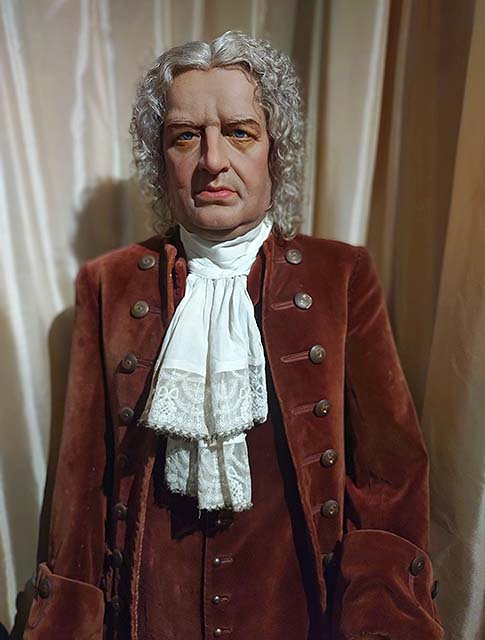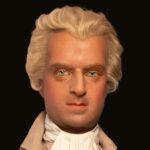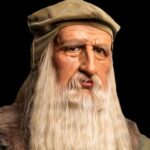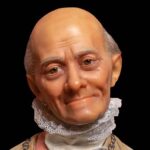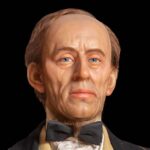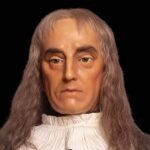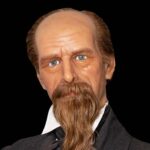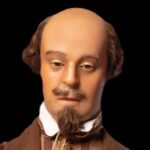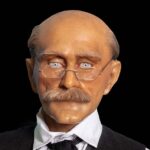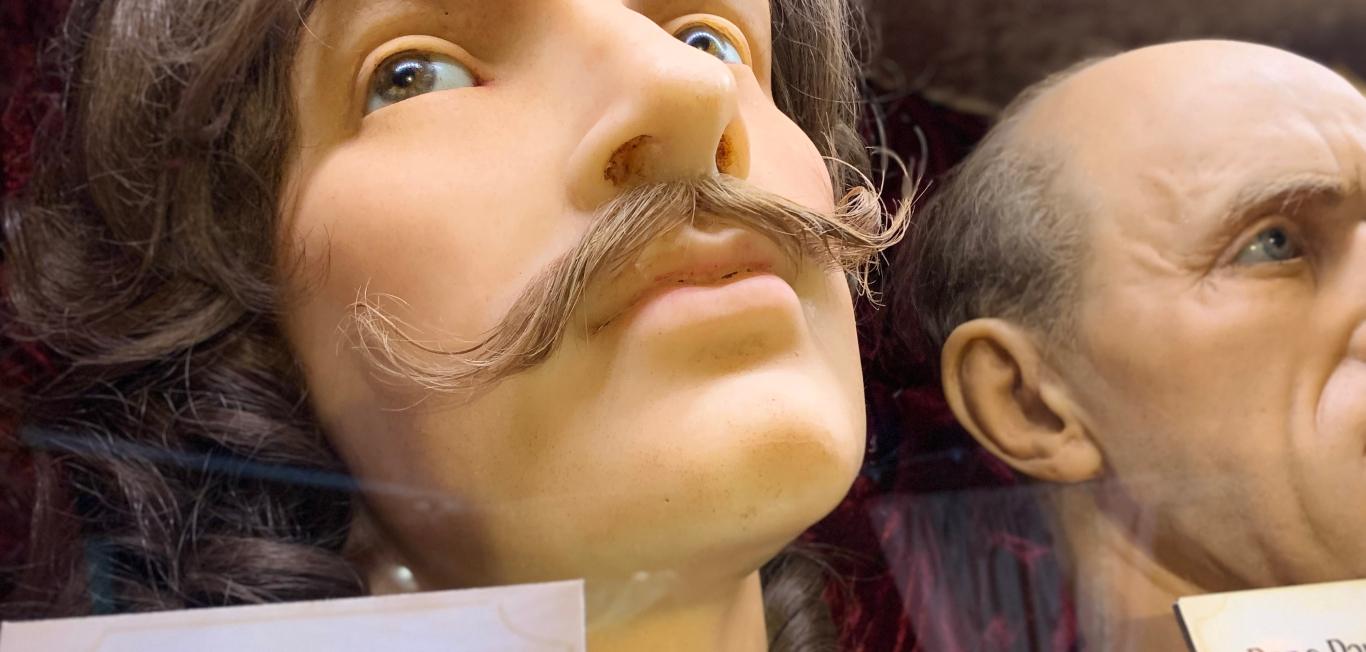Biography of Johann Sebastian Bach
Johann Sebastian Bach was always destined to be a musician. Born into a remarkable family with multiple generations of musical interest and history, it was no surprise that Bach would go on to choose the same path as his ancestors. Raised by his father, a town-employed court string player, and eventually by his eldest brother, a church organist, music was inescapable in Bach’s childhood. However, while the majority of his family were competent, practical musicians, Bach became the family standout due to his unique style as a composer.
Musically developing in a time of critical importance in the history of music, Bach embraced the emergence of the Baroque period, characterized by its deep expression, key details, and rich harmony. With mastery of instruments like the organ, harpsichord, and clavichord (ancestors of the modern piano), and violin, as well as proficiency with other various brass and wind instruments, Bach was able to enrich pre-existing musical forms and traditions to create a new style of music that is still celebrated centuries later.
Johann Sebastian Bach died on July 28, 1750, at the age of 65, in Leipzig, Germany. He is remembered for being one of the greatest composers of all time, responsible for the creation of some of the biggest masterpieces in church and instrumental musical history. In the 1,000+ pieces he composed throughout his life, Bach is known for his most famous works, the Cello Suite No. 1 in G Major, the Well-Tempered Clavier, the Mass in B Minor, and the Brandenburg Concertos. As an influential Baroque artist, a time already recognized as one of the greatest turning points for the arts and music in Western history, Bach’s legacy is cemented, his musical compositions set to continue touching the hearts of many and inspiring countless minds in future generations of musicians.
DID YOU KNOW?
Johann Sebastian Bach composed 1,000+ pieces throughout his life.
Interesting Facts about Johann Sebastian Bach
In 1702, Johann Sebastian Bach successfully applied for the position of organist in Sangerhausen. He ultimately did not fill this role, as another candidate was chosen after intervention from the regional duke.
The Bach family has a historically deep connection to Arnstadt, Germany, giving birth to 17, marrying off eight, and burying 25 family members between 1620 and 1792. Johann Sebastian Bach served as organist for four years in the New Church in Arnstadt, which would later be renamed the Bach Church.
In October 1705, Bach left Arnstadt to study under Dietrich Buxtehude, an influential organist and composer of church music, in Lübeck for a few months. He completed this entire journey on foot and was heavily reprimanded by his employers for his extended absence upon his return.
Johann Sebastian Bach, between his two wives, had 20 children. Of these 20, 10 died in childhood, three daughters remained unmarried and died in poverty, one son was mentally handicapped and needed a caretaker, and four sons became successful musicians and composers, following in the footsteps of their father. His youngest son, Johann Christian Bach, settled in London and briefly gave music lessons to a young Wolfgang Amadeus Mozart.
In September 1717, Bach became involved in a contest in Dresden against French organist Louis Marchand. While exact details are unknown, Marchand left the city a few hours before the contest was set to take place, making Johann Sebastian Bach the de facto winner.
Johann Sebastian Bach, while known for his mastery of keyboard instruments like the organ, harpsichord, and clavichord, actually favored the lautenwerck, a Baroque instrument that didn’t survive past the 19th century. Also called a lute-harpsichord, the lautenwerck was similarly built like a harpsichord, but with sheep’s guts as the strings, just like a lute.
In 1730, Bach wrote a 10-page complaint, “Short but Most Necessary Draft for a Well-Appointed Church Music”, to the town council in a bid to secure more funding for his choir and orchestra.
Early Life of Johann Sebastian Bach
Johann Sebastian Bach was born on March 21, 1685, in Eisenach, Germany, as the youngest child of 13 to parents Johann Ambrosius Bach and Elisabeth Lämmerhirt. Music was inescapable for young Bach, who grew up in a family home with rooms built for trainee musicians. While little is known about his earliest education, it is thought that Bach would have learned the foundations of string instruments from his father, who played in the town’s ducal court for a living, and most likely attended his baptismal church, Georgenkirche, where his eldest brother, Johann Christoph Bach, worked as organist.
In 1693, Bach began his formal education at a local Latin school. Tragedy would, unfortunately, strike the Bach family in the following years, with his mother and father passing away in 1694 and 1695, respectively, leaving the young boy an orphan at the age of 9. At this time, Bach fell into the care of his eldest brother, Johann Christoph, who was then studying under composer Johann Pachelbel, one of the greatest organ masters of his generation. Under his brother’s guidance, Bach had his first organ lessons. In 1704, Bach would write his first keyboard composition, the Capriccio in E major, which he dedicated to Johann Christoph. Attending a new, prestigious grammar school in the Duchy of Saxe-Gotha, Johann Sebastian Bach delved further into his musical interests, joining the school’s choir.
DID YOU KNOW?
Bach wrote his first keyboard composition, "the Capriccio in E major," in 1704.
In 1700, he joined St. Michael’s School in Lüneburg after securing a place in their select choir, where he’d become a pupil of Georg Böhm, another popular German composer of primarily keyboard music. In 1703, Bach joined Duke Johann Ernst III’s private orchestra in Weimar as a violinist for the first half of the year, leaving for Arnstadt soon after to test out the newly built organ at the New Church, becoming its organist a month later at 18, where he’d remain for the next four years of his life.
Major Milestones and Accomplishments by Johann Sebastian Bach
In June 1707, Johann Sebastian Bach moved to Mühlhausen, becoming the organist at St. Blasius’s Church. On October 17 of the same year, he’d get married to his second cousin, Maria Barbara, with whom he’d go on to have seven children (although only four made it to adulthood). In Mühlhausen, Bach composed pieces that were more conservative, writing church cantatas based on existing biblical and chorale texts, remarkably different from his later cantatas, which he would derive inspiration from “modern” Italian operatic forms.
In February 1708, the first (and few) of Bach’s compositions to be printed in his lifetime, the cantata Gott ist mein König (God is my King), was performed during the inauguration of the new Mühlhausen town council. In the years following, Bach would continue to be commissioned to compose more music for these inauguration ceremonies. In June 1708, Johann Sebastian Bach was appointed chamber musician and organist at the court of Dukes Wilhelm Ernst and Ernst August of Saxe-Weimar, where he would remain mainly in the palace church until 1717, composing over 30 cantatas and many organ and harpsichord pieces.
While at Weimar, Bach saw many career opportunities and growth. In December 1713, he auditioned for the position of director of music in Halle, but ultimately chose not to take the position after the duke raised his salary at Weimar. On March 2, 1714, Bach was promoted to concertmaster, a position that required him to compose a cantata once every month. It is around this time that his cantatas made the previously noted shift from conservative practices to “modern” Italian operatic forms.
On December 1, 1716, musical director at Weimar, Johann Samuel Drese, died and was succeeded by his son. Harboring resentment for being passed over for this high position, Johann Sebastian Bach signed a contract in August 1717 with the court of Prince Leopold of Anhalt-Köthen to become his musical director, all without permission to leave Weimar from the duke. His resignation from Weimar was refused, and the duke had Bach imprisoned for disobedience for a month in early November.
After his release from imprisonment and subsequent dismissal from the duke’s court, Bach quickly moved to Köthen to work under the prince. Here, he switched his attention from cantatas to chamber and orchestral music, although he’d still write a few for special occasions, such as the prince’s birthday. In 1720, Bach accompanied Prince Leopold to Karlovy Vary. Upon his return, he discovered his wife to be dead and buried, supposedly from a sudden illness (although the exact cause is still unknown today). Soon after, he traveled to Hamburg for an audition, possibly unsettled by Maria’s death, but nothing came of it.
A year later, on December 3, 1721, Johann Sebastian Bach married court singer Anna Magdalena Wilcke, with whom he had his remaining 13 children (only six surviving into adulthood). A few days later, Prince Leopold would marry Princess Friederica Henrietta of Anhalt-Bernburg, who required so much attention from the prince that his musical interests declined, leaving Bach feeling neglected and unhappy. This led him to begin seeking new employment in 1722, although he wouldn’t move from Köthen until 1723, when he was appointed cantor of St. Thomas’s Church in Leipzig, where he’d go back to cantatas and perform at every church service on Sundays and feast days. Despite leaving Köthen, Bach retained a good relationship with Prince Leopold, still commissioned to write a cantata for his birthday annually until his death in 1728, and he allowed him to use the title of Royal Kapellmeister, even after his resignation.
In March 1729, Bach took charge of the Collegium Musicum, a society where mostly amateur musicians would perform in private and public recitals. In Leipzig, the Collegium Musicum was based in Café Zimmermann, one of the most popular coffeehouses in town. There, they would hold rehearsals and weekly performances for the public, going open-air in the summer months. Working with the Collegium Musicum allowed Bach to demonstrate his mastery of keyboard instruments, as he hadn’t officially been an organist since before he moved to Köthen in 1717. Bach remained in Leipzig, Germany, for the remainder of his life.
Late In Life
In May 1747, Johann Sebastian Bach traveled to Potsdam and Berlin to visit his son, Carl Philipp Emanuel Bach. After being extended a welcome by Prussian King Frederick II (the Great) in July, and after being challenged by him to improvise on a theme chosen by the king, Bach’s The Musical Offering was born. In June that same year, he joined the Society of the Musical Sciences, which had been founded by his former pupil, Lorenz Christoph Mizler.
There’s little known about the illnesses that Bach suffered from in the last years of his life. In 1749, he suffered from motor problems in his right arm and writing hand, as well as an eye condition that required surgery in 1750. John Taylor, a controversial English ophthalmologist, performed two virtually unsuccessful operations on Bach, although he did regain some sight for a short time. With complications from the surgery, as well as other general health issues, Johann Sebastian Bach died after suffering from a stroke on July 28, 1750, at the age of 65, in Leipzig, Germany. His widow, Anna Magdalena, was left poor without him. With sons too young to care for her and stepsons who simply didn’t step up, Anna died 10 years later in 1760 and was given a pauper’s funeral.
DID YOU KNOW?
Late in life, Bach suffered from motor problems in his right arm and writing hand...
The Art of the Fugue, a composition made for an unspecified instrument, which Bach had been working on in the last decade of his life, was unfortunately left uncompleted due to his health issues. However, even unfinished, it was published in 1751 and reissued again in 1752 after it gained little attention with a laudatory preface by popular Berlin musician, Friedrich Wilhelm Marpurg. By 1756, only about 30 copies had been sold, leading Carl Philipp Emanuel Bach to offer the plates for sale, which are believed to have been sold for scrap. While this marked a technical end to Johann Sebastian Bach’s life, it was only the beginning for his legacy, a man firmly cemented as one of the greats in musical history.
FAQs
What is Johann Sebastian Bach most known for?
Johann Sebastian Bach is most known for his contributions to musical history. He is one of the greatest composers of all time, and he rose as a popular German musician during the Baroque period. Taking an interest in composing church and instrumental music, Bach’s work has been celebrated for centuries and continues to serve as inspiration for musicians to this day.
What Instrument was Johann Sebastian Bach’s favorite?
While a master of various keyboard instruments, the organ, a highly notable choice in his career, Johann Sebastian Bach’s favorite instrument was actually the lautenwerck, or lute-harpsichord, a Baroque period instrument that failed to survive past the 19th century. Built like a harpsichord, but with sheep guts for strings like a lute, the lautenwerck took inspiration from both a keyboard and a string instrument.
How many compositions did Johann Sebastian Bach write?
It is hard to say for certain how many compositions Johann Sebastian Bach wrote in his lifetime. While 1,126 pieces are currently preserved and credited to Bach in the Bach-Werke-Verzeichnis, the official catalog of Bach’s work, some of his pieces are already known to have been lost or destroyed (over 200 in the BWV), making the true count impossible to know.
What were Johann Sebastian Bach’s most famous pieces?
Some of Johann Sebastian Bach’s most famous pieces include the Cello Suite No. 1 in G Major, the Well-Tempered Clavier, the Mass in B Minor, and the Brandenburg Concertos. While these pieces are among the most widely recognized, it should be noted that many of his 1,000+ compositions have been featured in various films and television shows, such as Thor: Ragnarok (2017), Cruel Intentions (1999), Stranger Things, and Bluey.
When did Johann Sebastian Bach write his first composition?
While Johann Sebastian Bach’s 1708 published cantata, Gott ist mein König (God is my King), is widely considered to be his first composition, he actually wrote a keyboard composition four years earlier in 1704, the Capriccio in E major. This piece was dedicated to his eldest brother, Johann Christoph Bach, who gave young Johann Sebastian his first lessons on the organ.
